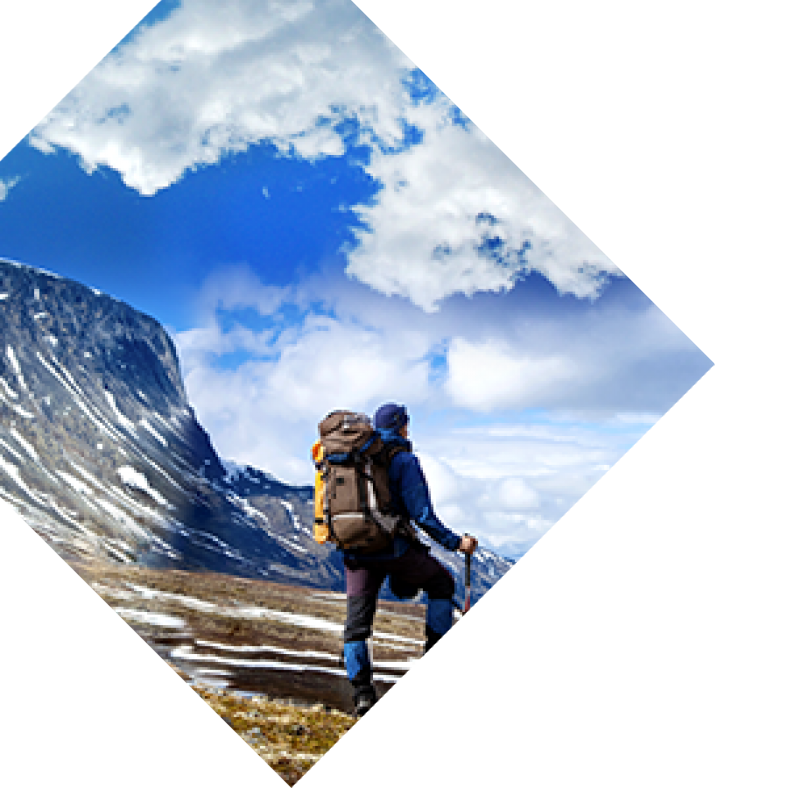 Leaves of three; let it be. Words to live by if you’re venturing around poison ivy-filled nature. The rash caused by poison ivy is the result of an oil called urushiol. It’s the same oil found in poison oak and poison sumac. Often, people don’t experience the itchy, blistering rash until 12 to 72 hours after they’ve come into contact with the oil. If you’re on a backpacking trip, running into poison ivy can make for a bad time. Below we’ll cover tips for preventing poison ivy contact and treatment tips that help relieve the itch.
Leaves of three; let it be. Words to live by if you’re venturing around poison ivy-filled nature. The rash caused by poison ivy is the result of an oil called urushiol. It’s the same oil found in poison oak and poison sumac. Often, people don’t experience the itchy, blistering rash until 12 to 72 hours after they’ve come into contact with the oil. If you’re on a backpacking trip, running into poison ivy can make for a bad time. Below we’ll cover tips for preventing poison ivy contact and treatment tips that help relieve the itch.
How to prevent poison ivy contact
 The best fight against poison ivy? Prevention. Make sure you’re outfitted with long pants, long shirts, and tall socks to protect your skin while walking on overgrown trails. If you know you’re entering an area with poison ivy and you’re sensitive to the plant, consider applying products such as Ivy Block lotion beforehand to reduce the risk of a rash. Post-hike, be sure to rinse your hiking boots with water if you think you’ve come into contact with the plant. Same goes for your four-legged companion. Your dog’s fur can transmit the plant’s oil onto your skin, so be careful before cuddling up after an adventure. The easiest way to prevent poison ivy contact is to make sure everyone heading outdoors, including the children, knows how to identify poison ivy so they can avoid it. According to The Mississippi Agricultural and Forestry Experiment Station, poison ivy is the most common and widespread among the three poisonous plants.
The best fight against poison ivy? Prevention. Make sure you’re outfitted with long pants, long shirts, and tall socks to protect your skin while walking on overgrown trails. If you know you’re entering an area with poison ivy and you’re sensitive to the plant, consider applying products such as Ivy Block lotion beforehand to reduce the risk of a rash. Post-hike, be sure to rinse your hiking boots with water if you think you’ve come into contact with the plant. Same goes for your four-legged companion. Your dog’s fur can transmit the plant’s oil onto your skin, so be careful before cuddling up after an adventure. The easiest way to prevent poison ivy contact is to make sure everyone heading outdoors, including the children, knows how to identify poison ivy so they can avoid it. According to The Mississippi Agricultural and Forestry Experiment Station, poison ivy is the most common and widespread among the three poisonous plants.
How to identify poison ivy
 To identify poison ivy, look for the following characteristics:
To identify poison ivy, look for the following characteristics:
- Compound leaves: each leaf is composed of three leaflets
- In each set of leaflets, look to see if the middle leaflet has a longer stem than the two side leaflets
- In the east, midwest, and south: plant will grow as a vine or freestanding plant. In the north and west, it grows as a shrub
- In the spring, tips of leaves may be tinged red
- From late May to July, poison ivy may have small, yellow-green flowers
Symptoms of poison ivy
According to the University of Maryland Medical Center, the symptoms of poison ivy include:
- Extreme itching
- Red, streaky, patchy rash where the plant touched the skin
- Red bumps, which may form large, weeping blisters
Poison ivy treatment
 If you know you’ve made contact with poison ivy, the first step for treatment is washing the area. Depending on your skin’s sensitivity, you have about 10-30 minutes to rinse the oil off before it binds to your skin. Running water is recommended, though if you’re on the trail, use what you can. Avoid washing with soaps that contain oils, as these can spread the irritating oil and make the rash more widespread. Once home, wash your clothes and boots with soap and hot water to remove any lingering plant oils. If you have tools that came in contact with the plant, wash them with a dilute bleach solution or rubbing alcohol.
If you know you’ve made contact with poison ivy, the first step for treatment is washing the area. Depending on your skin’s sensitivity, you have about 10-30 minutes to rinse the oil off before it binds to your skin. Running water is recommended, though if you’re on the trail, use what you can. Avoid washing with soaps that contain oils, as these can spread the irritating oil and make the rash more widespread. Once home, wash your clothes and boots with soap and hot water to remove any lingering plant oils. If you have tools that came in contact with the plant, wash them with a dilute bleach solution or rubbing alcohol.
Remedies that relieve the itch
- Keep the affected area cool, as heat and sweating can make the itching worse.
- Calamine lotion and hydrocortisone cream can help reduce itching and blistering.
- Draw a bath with lukewarm water and oatmeal; soak for 10-30 minutes.
- Take over-the-counter antihistamines.
It’s important to note that poison ivy rashes should go away in a few weeks for most people. If you find you have more severe reactions, like swelling around the face or if you have trouble breathing or swallowing, you should visit an emergency room immediately.


